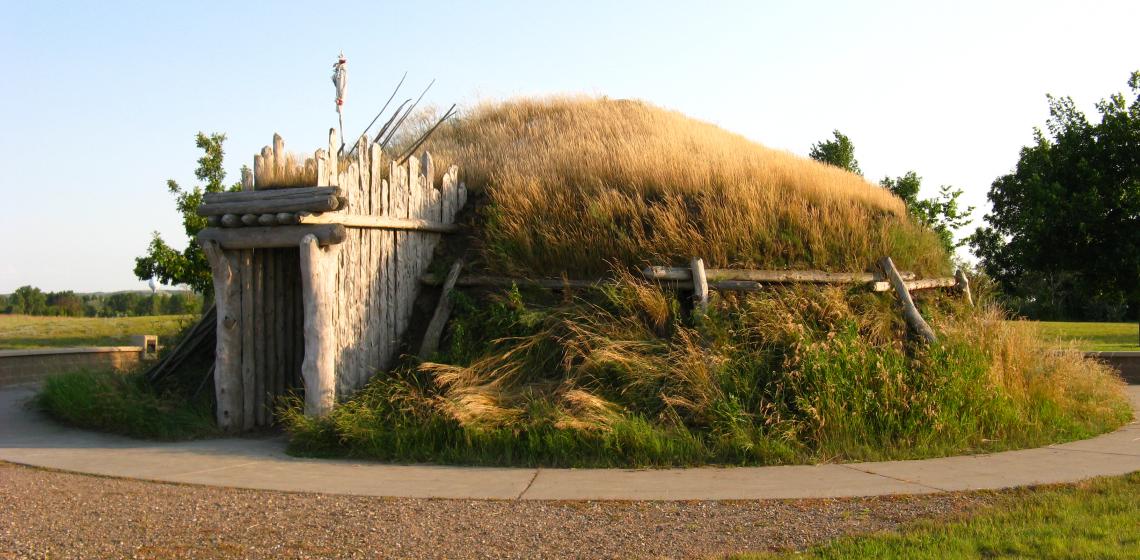
Earthlodge people hunted bison and other game, but were in essence farmers living in villages along the Missouri and its tributaries. The site was a major Native American trade center for hundreds of years prior to becoming an important market place for fur traders after 1750.
With their mastery of agriculture, tribes living in the Upper Missouri River Valley developed a unique earth and wooden home to fit their sedentary lifestyle. The result of centuries of innovation and adaptation, the circular earthlodge of the Mandan, Hidatsa, and Arikara people was the perfect home for life on the Northern Plains.
In 1974, the United States Congress established Knife River Indian Villages National Historic site to preserve and interpret an area rich with history and culture. In 1995, the National Park Service constructed a forty foot diameter earthlodge with traditional materials next to the Visitor Center. It is fully furnished and open to visitors during regular park hours.
An earthlodge housed between ten and twenty people, usually sisters and their families. Beds were located around the outer ring in the areas between support poles. Personal items were kept under the beds while general use items were kept on raised platforms similar to bed frames. A typical earthlodge also contained a corral for prized war and hunting ponies on one side of the door.
The main focus in the earthlodge was the central fire pit with smoke escaping through a hole in the roof. In the event of heavy rain or snow, an old bullboat could be turned over the hole and propped up to allow smoke to escape. Earthlodge occupants sat around the central fire on reed mats including the atuka, a high-sided seat reserved for the oldest man of the household. The atuka was also offered to visitors as a sign of respect.
The cache pit is a large bell-shaped hole in the floor lined with willow and dry grass and filled with dried corn, beans, squash, and sunflower. The women built several cache pits both inside and outside the earthlodge and covered them over to hide their location. Parfleches were rawhide containers hung from the ceiling used to store a variety of items such as clothes, dried foods, trade items, craft materials, and hides.
The tribes living along the Missouri River considered the earthlodge a sacred structure. The Hidatsa believed the spirit of the earthlodge resided in the four central posts and wrapped them with a hide or trade cloth as an offering. At the back of the earthlodge could be found a shrine containing sacred objects. Only the men who owned the objects were permitted to enter the space near the shrine.
Timber framed houses slowly replaced the earthlodge in the second half of the nineteenth century. The earthlodge lasted into the twentieth century as a ceremonial structure or in a secondary role as a barn or stable. Today, the earthlodge remains an important structure and symbol for the Three Affiliated Tribes (Mandan, Hidatsa, and Arikara).
Text source: Website Knife River Indian Villages
Photo: Reconstructed Hidatsa Indian Earthlodge, by Xerxes2004, CC BY-SA 3.0, https://en.wikipedia.org/w/index.php?curid=24991970
